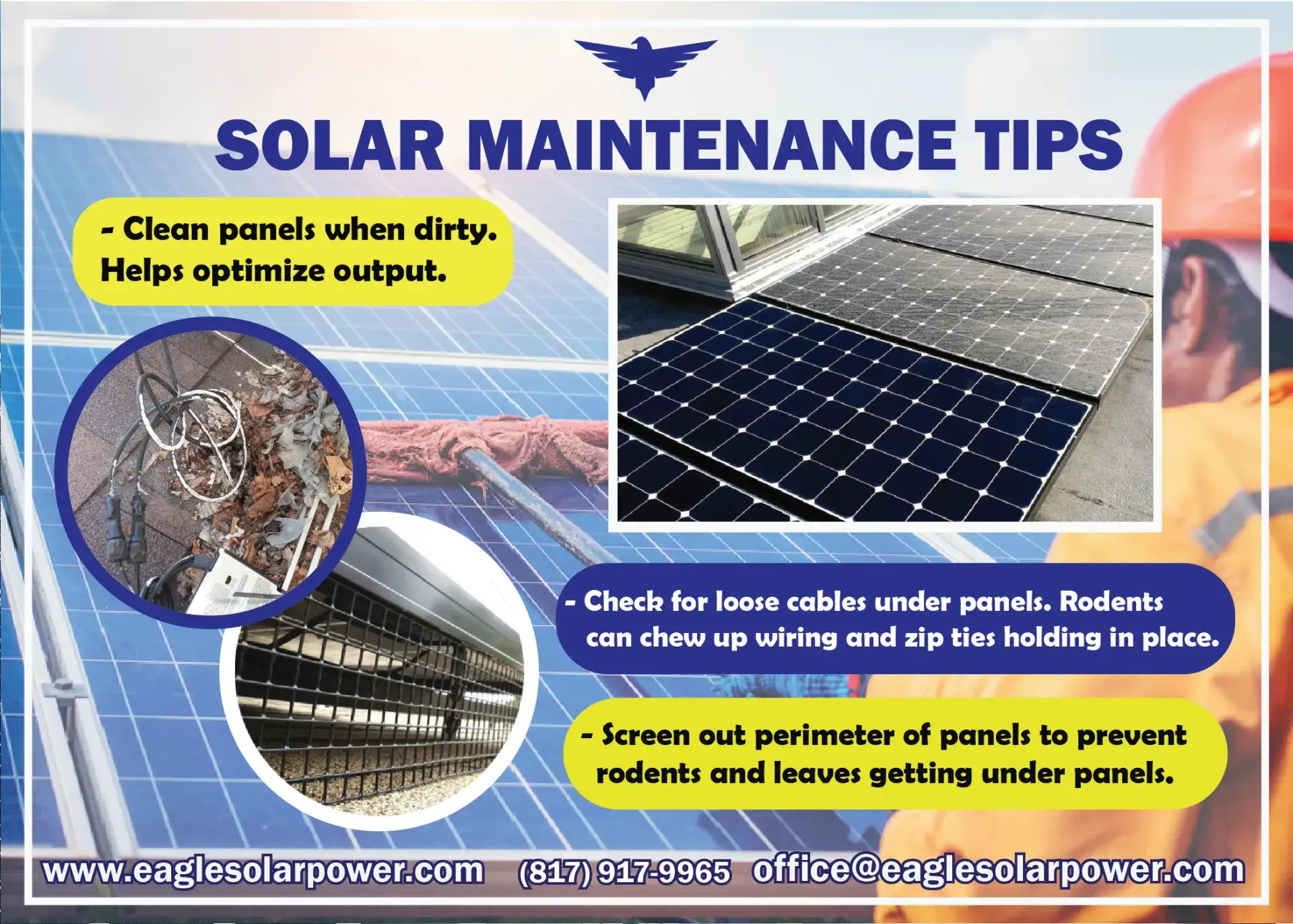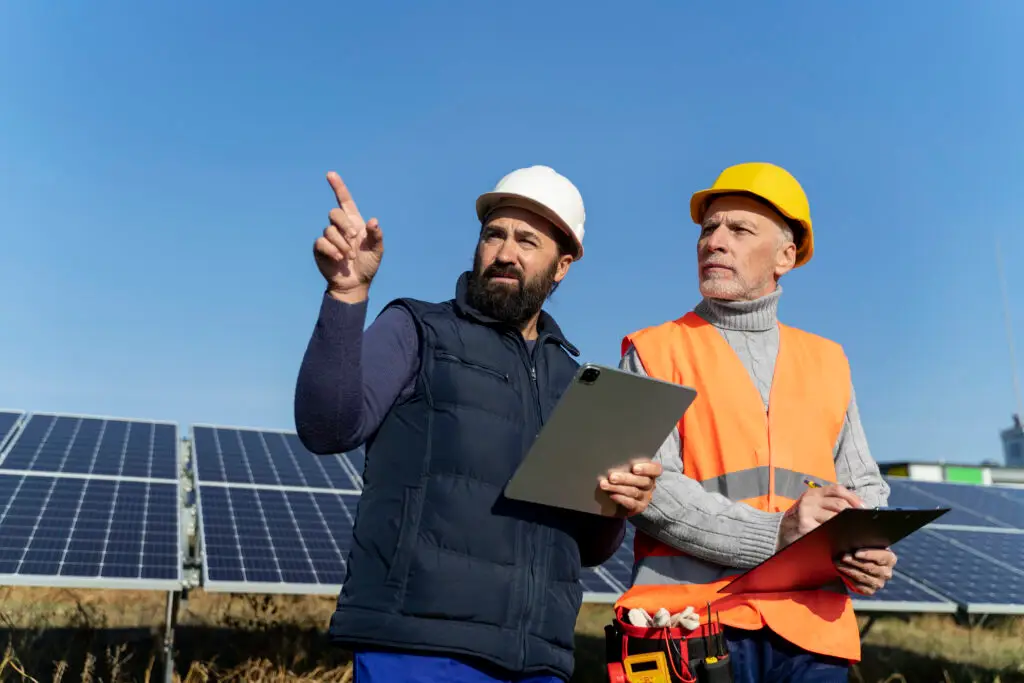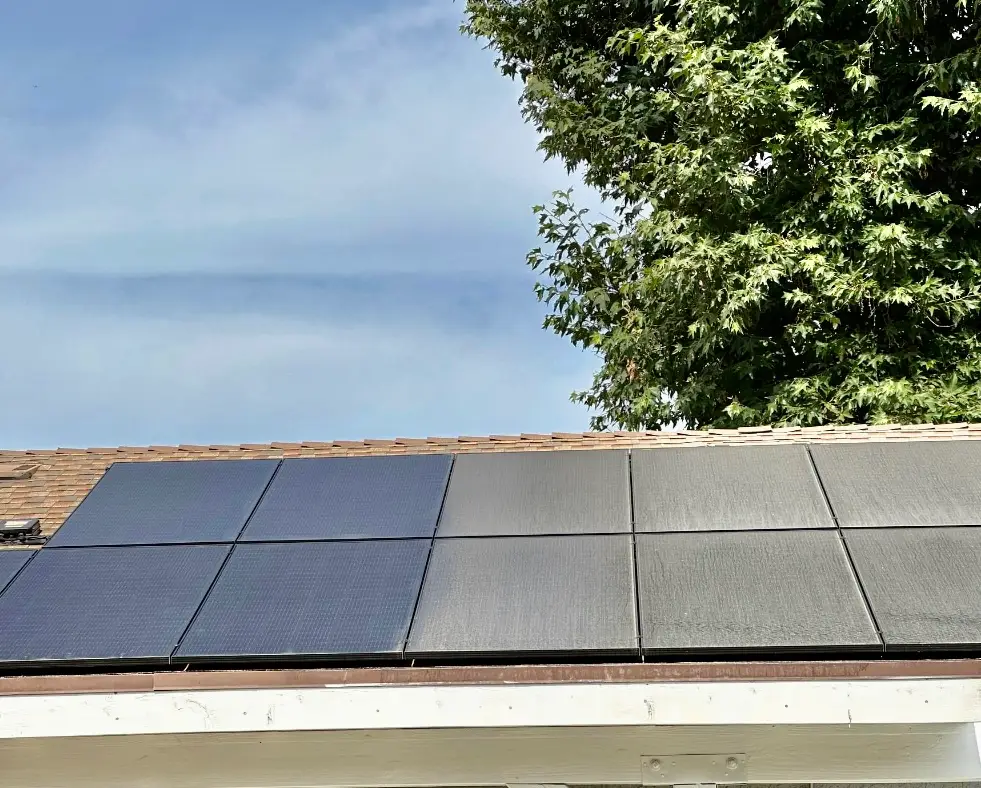Eagle solar Power Blog
Lorem ipsum pellentesque elementum fringilla ullamcorper. Ut tellus massa magnis nibh tristique. Dui sem quam convallis tellus fames Nisl eget dui commodo vestibulum pellentesque ac et tincidunt. Venenatis sed vulputate turpis fermentum tempor. Non eget eget risus felis purus aliquam odio dolor pretium. Quam viverra leo cras ipsum Volutpat egestas sit vel quis. Sollicitudin phasellus nisl aenean suspendisse.
Lorem ipsum dolor sit amet consectetur. Tincidunt sed porta adipiscing et. Feugiat volutpat at felis amet enim lacus at nullam. Quisque praesent sed et ac pellentesque commodo augue sed.
Lorem ipsum dolor sit amet consectetur. Velit dictum vulputate risus ornare nisl mauris phasellus. Donec nibh risus molestie dolor condimentum morbi quis. Viverra pharetra ipsum vitae volutpat penatibus viverra imperdiet. Morbi ultrices varius posuere tincidunt gravida consectetur at amet.
Introduction
The Dallas-Fort Worth Metroplex has experienced remarkable growth in solar energy adoption over the past decade, transforming the region's energy landscape. With abundant sunshine, decreasing installation costs, and compelling financial incentives, North Texas homeowners are increasingly turning to solar power as a practical solution for rising energy costs and environmental concerns. However, many prospective solar customers still have questions about whether solar makes sense specifically in the DFW climate, economic environment, and regulatory framework.
This comprehensive guide explores the unique advantages and considerations of solar energy in the DFW Metroplex, going beyond generic benefits to address region-specific factors that influence solar decisions. From understanding local weather patterns to navigating Texas-specific regulations, we'll cover what most solar guides overlook to help you make an informed decision about powering your North Texas home with solar energy.
The DFW Solar Advantage: More Than Just Sunshine
The DFW Metroplex enjoys approximately 232 sunny days per year, significantly above the national average of 205 days. This abundant sunshine translates to exceptional solar potential, but the region's solar advantage extends beyond mere daylight hours.
According to the National Renewable Energy Laboratory (NREL), North Texas receives between 5.5 and 6.0 kWh/m²/day of solar radiation annually, placing it among the most solar-productive regions in the country. This high solar insolation rating means DFW solar panels can generate more electricity per square foot than systems installed in many other major metropolitan areas.
What many don't realize is that DFW's climate offers another distinct advantage: solar panels actually perform more efficiently in our moderate temperatures than in extremely hot climates. While panels do generate electricity from sunlight, excessive heat can reduce their efficiency. The Metroplex's typical temperature range provides an optimal balance that maximizes production while avoiding the efficiency losses seen in hotter regions like the Rio Grande Valley.
Perhaps most compelling for local homeowners is the economic context: Texas has the highest residential electricity consumption in the continental United States, with DFW residents consuming an average of 14,000 kWh annually compared to the national average of 10,700 kWh. This high consumption pattern means DFW homeowners often have more to gain financially from solar investments than residents in lower-consumption regions.
Understanding DFW's Unique Solar Economics
The financial case for solar in the DFW Metroplex differs significantly from other regions due to Texas's deregulated electricity market and the absence of statewide solar incentives. Unlike states with generous solar rebate programs, Texas relies primarily on federal incentives and local utility programs, creating a unique economic landscape for solar investments.
The federal Solar Investment Tax Credit (ITC) remains the cornerstone financial incentive, allowing homeowners to deduct 30% of their solar system costs from their federal taxes. For the average DFW installation costing between $15,000-$25,000, this represents a substantial $4,500-$7,500 in tax savings.
At the local level, several DFW utilities offer solar-specific incentives that many homeowners overlook. Oncor's Solar Photovoltaic Residential Program provides rebates between $0.40-$0.65 per watt installed, potentially adding thousands in immediate savings. Meanwhile, cooperatives like CoServ and Farmers Electric offer varying performance-based incentives that reward solar production over time.
What many solar guides fail to mention is how Texas's competitive electricity market creates unique solar economics. Unlike fixed-rate states, Texas homeowners face market-based electricity rates that have shown increasing volatility. According to the U.S. Energy Information Administration (EIA), Texas residential electricity rates have fluctuated by as much as 20% annually in recent years. Solar provides a hedge against this price volatility by locking in energy costs for 25+ years, an advantage particularly valuable in Texas's variable market.
Property value impacts also deserve special attention in the DFW context. According to Zillow Research, homes with solar systems sell for approximately 4.1% more than comparable non-solar homes nationwide. In the DFW market, where median home values hover around $350,000, this could translate to a $14,350 premium—often exceeding the net cost of the solar system itself after incentives.
Navigating DFW Specific Solar Challenges
While solar offers tremendous benefits for DFW homeowners, the region presents unique challenges that require careful consideration and planning.
First, North Texas experiences significant seasonal weather variations that impact solar production. Summer months deliver exceptional solar yields, but the region's spring hail storms present risks that must be mitigated through proper equipment selection and insurance coverage. Most quality solar installations use impact-resistant panels that withstand hail up to one inch in diameter, and many homeowners insurance policies cover solar systems as part of the dwelling coverage—though this should always be verified with your specific carrier.
Homeowners Association (HOA) restrictions represent another DFW-specific challenge. While Texas Property Code 202.010 prohibits HOAs from outright banning solar installations, it does allow for certain aesthetic requirements and placement restrictions. Many DFW communities have strict architectural guidelines that must be navigated carefully during system design. Experienced local installers maintain relationships with major HOAs throughout the Metroplex and can design systems that satisfy both energy production goals and aesthetic requirements.
The region's relatively low electricity rates compared to states like California or Massachusetts also impact solar economics. With average residential rates around 12-13 cents per kWh (though rising), system sizing becomes particularly important for maximizing returns. DFW installations typically require careful attention to consumption patterns and strategic system sizing rather than simply maximizing available roof space.
Perhaps the most overlooked challenge is the fragmented nature of DFW's permit requirements. With dozens of municipalities across the Metroplex, permitting processes vary dramatically from city to city. Permit costs range from under $100 in some areas to several hundred dollars in others, while turnaround times can span from same-day approval to several weeks. Working with a local installer familiar with your specific municipality's requirements can significantly impact project timelines and costs.
The Environmental Impact: DFW's Solar Contribution
The environmental benefits of solar energy are well-documented, but the specific impact of solar adoption in the DFW context deserves closer examination.
Texas leads the nation in carbon dioxide emissions, with the state's electricity generation sector contributing significantly to this total. According to the EIA, Texas power plants emitted 204 million metric tons of CO2 in 2020. The DFW region, with its heavy reliance on natural gas and coal for electricity generation, contributes substantially to these emissions.
A typical 8kW residential solar system in the DFW area generates approximately 11,000 kWh annually. Based on the region's energy mix, this clean energy production prevents roughly 7.7 metric tons of CO2 emissions each year—equivalent to removing 1.7 passenger vehicles from the road or planting 127 tree seedlings grown for 10 years, according to EPA estimates.
What's rarely discussed is how solar adoption in DFW contributes to reduced strain on the state's electrical grid during critical periods. ERCOT, Texas's grid operator, has faced growing challenges meeting peak demand, particularly during summer months. Distributed solar systems generate maximum output during these peak demand periods, effectively reducing grid stress when it's most vulnerable. This "peak shaving" effect delivers benefits beyond the individual homeowner, contributing to overall grid stability and potentially helping avoid outages during extreme weather events.
Water conservation represents another overlooked environmental benefit particularly relevant to North Texas. Traditional power plants—especially coal and natural gas facilities—require substantial water resources for cooling. The Texas Water Development Board estimates that power generation accounts for approximately 4% of the state's water usage. By generating electricity without water consumption, DFW solar systems help conserve this precious resource in a region frequently experiencing drought conditions.
Solar Technology Innovations Ideal for DFW Homes
The solar industry continues to evolve rapidly, with several recent technological innovations offering particular advantages for DFW homeowners.
Bifacial solar panels, which generate electricity from both sides by capturing reflected light, show exceptional promise in the Metroplex. DFW's combination of high direct sunlight and prevalent light-colored roofing materials creates ideal conditions for bifacial technology, potentially increasing energy yields by 5-15% compared to traditional panels. Though slightly more expensive initially, their improved performance can deliver better long-term returns in our region's specific conditions.
Smart inverters with advanced grid integration capabilities are becoming increasingly valuable in the Texas market. These devices can respond dynamically to grid conditions, potentially qualifying homeowners for additional compensation through grid services programs that are beginning to emerge in the state. As ERCOT continues developing programs that reward distributed energy resources for grid support, these advanced inverters position homeowners to benefit from future incentive structures.
Building-integrated photovoltaics (BIPV), including solar shingles and tiles, address one of the primary concerns of DFW homeowners: aesthetic impact. These products integrate seamlessly with traditional building materials, making them particularly suitable for neighborhoods with strict architectural guidelines. While currently more expensive than conventional panels, their declining costs and dual functionality as both roofing material and power generator make them increasingly viable for the appearance-conscious DFW market.
Battery storage systems have seen dramatic adoption increases across the Metroplex following recent weather-related grid failures. Beyond emergency backup, these systems offer economic advantages by enabling homeowners to store excess daytime production for evening use—particularly valuable given that most DFW utilities have eliminated traditional net metering programs. The ability to self-consume solar energy rather than export it to the grid at reduced compensation rates significantly improves financial returns in the current regulatory environment.
Making the Solar Decision: DFW Specific Considerations
When evaluating solar for your DFW home, several region-specific factors should guide your decision-making process.
Roof orientation and condition require particular attention in our region. While south-facing roofs produce maximum annual output, east-west orientations perform exceptionally well in DFW due to our extended summer daylight hours and relatively mild winter conditions. Local data shows that east-west systems in North Texas typically produce 80-85% of what identical south-facing systems generate—a significantly better ratio than in northern states where the disparity is much greater.
System sizing strategy differs in the DFW market compared to areas with generous net metering policies. Without full retail compensation for exported energy, oversizing systems relative to consumption rarely makes economic sense. Most reputable local installers recommend systems that offset 70-90% of annual consumption rather than aiming for 100%+ offset, which ensures that most generated electricity is consumed on-site rather than exported at reduced rates.
Financing options should reflect the unique economic environment of North Texas. While solar loans are widely available, the DFW region's combination of high home equity and relatively lower installation costs compared to coastal markets makes home equity financing particularly advantageous for many homeowners. With interest potentially tax-deductible and rates typically lower than specialized solar loans, this option often provides the best overall economics for qualified homeowners.
The region's rapid population growth and development create another important consideration: future shading risk. As the Metroplex continues expanding, new construction could potentially impact solar access for existing systems. Texas lacks comprehensive solar access laws that protect homeowners from future shading by neighboring development. Professional solar assessments should include evaluation of adjacent properties and development potential to mitigate this risk through strategic system placement.
Conclusion: The DFW Solar Opportunity
As we've explored throughout this guide, solar energy offers compelling advantages for DFW Metroplex homeowners, with region-specific benefits that extend beyond the generic advantages commonly discussed. From our exceptional solar resource and unique economic environment to technological innovations particularly suited to our climate, the case for solar in North Texas has never been stronger.
The decision to invest in solar remains highly individual, dependent on your specific property characteristics, energy consumption patterns, financial situation, and long-term goals. However, with proper planning and attention to the DFW-specific factors we've discussed, solar energy represents an increasingly attractive option for homeowners looking to reduce energy costs, increase property values, and contribute to a more sustainable energy future for North Texas.
Eagle Solar Power has served the DFW Metroplex for over six years, combining 40+ years of roofing expertise with specialized solar knowledge to deliver systems optimized for our unique regional conditions. Our team of local experts understands the specific challenges and opportunities of going solar in North Texas, from navigating municipal permitting requirements to designing systems that perform exceptionally in our climate while meeting stringent HOA guidelines.
As a family-owned business deeply rooted in the DFW community, we provide comprehensive solar services including custom system design, professional installation, maintenance, and specialized services like panel detach and reset during roof replacement. Our commitment to quality craftsmanship and customer satisfaction has established us as one of the Metroplex's most trusted solar providers.
If you're considering solar for your DFW home, we invite you to schedule a free consultation and solar analysis with our team. We'll help you evaluate your specific situation and determine if solar makes sense for your property, with no pressure and transparent information tailored to your unique needs.

Optimize for Efficiency : Lorem ipsum dolor sit amet consectetur. Velit dictum vulputate risus ornare nisl mauris phasellus. Donec nibh risus molestie dolor condimentum morbi quis. Viverra pharetra ipsum vitae volutpat penatibus viverra imperdiet. Morbi ultrices varius posuere tincidunt gravida consectetur at amet. Morbi lectus tempus ipsum mauris nisl turpis eu sed. Dictum sed a ut nibh.
Automate & Innovate : Lorem ipsum dolor sit amet consectetur. Velit dictum vulputate risus ornare nisl mauris phasellus. Donec nibh risus molestie dolor condimentum morbi quis. Viverra pharetra ipsum vitae volutpat penatibus viverra imperdiet. Morbi ultrices varius posuere tincidunt gravida consectetur at amet. Morbi lectus tempus ipsum mauris nisl turpis eu sed. Dictum sed a ut nibh.






